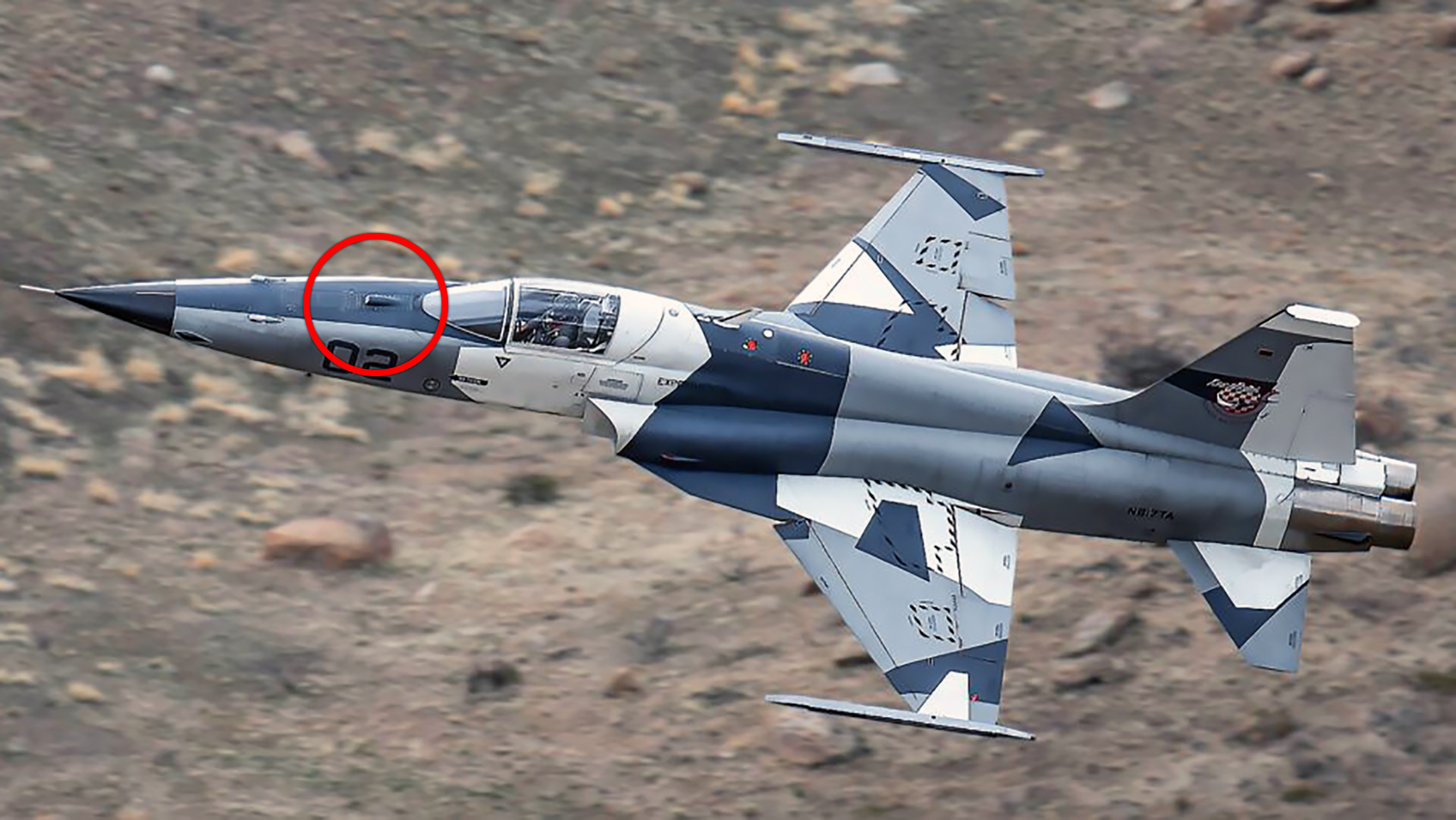Tactical Air Support said it has completed initial flight testing of the Lockheed Martin-designed TacIRST, an integrated, infrared search-and-track sensor, or IRST, on its F-5 Advanced Tiger aggressor jets. Through this collaboration between Lockheed Martin and Tactical Air Support, both companies are working to bring this capability to the broader threat replication/adversary community.
Tactical Air Support (TacAir) is a Reno, Nevada-based private ‘red air’ commercial adversary support contractor that has for years been working to further develop its advanced F-5E/F derivative, dubbed the F-5AT, to efficiently simulate modern enemy capabilities to better prepare U.S. and allied aircrews for future conflicts. Tactical Air Suport’s fleet is made up of 21 ex-Jordanian surplus F-5E/F airframes that have been heavily modified and refurbished by Northrop Grumman and equipped with tailored upgrades to create a “4th generation adversary platform with 3rd generation economy,” as described by TacAir.
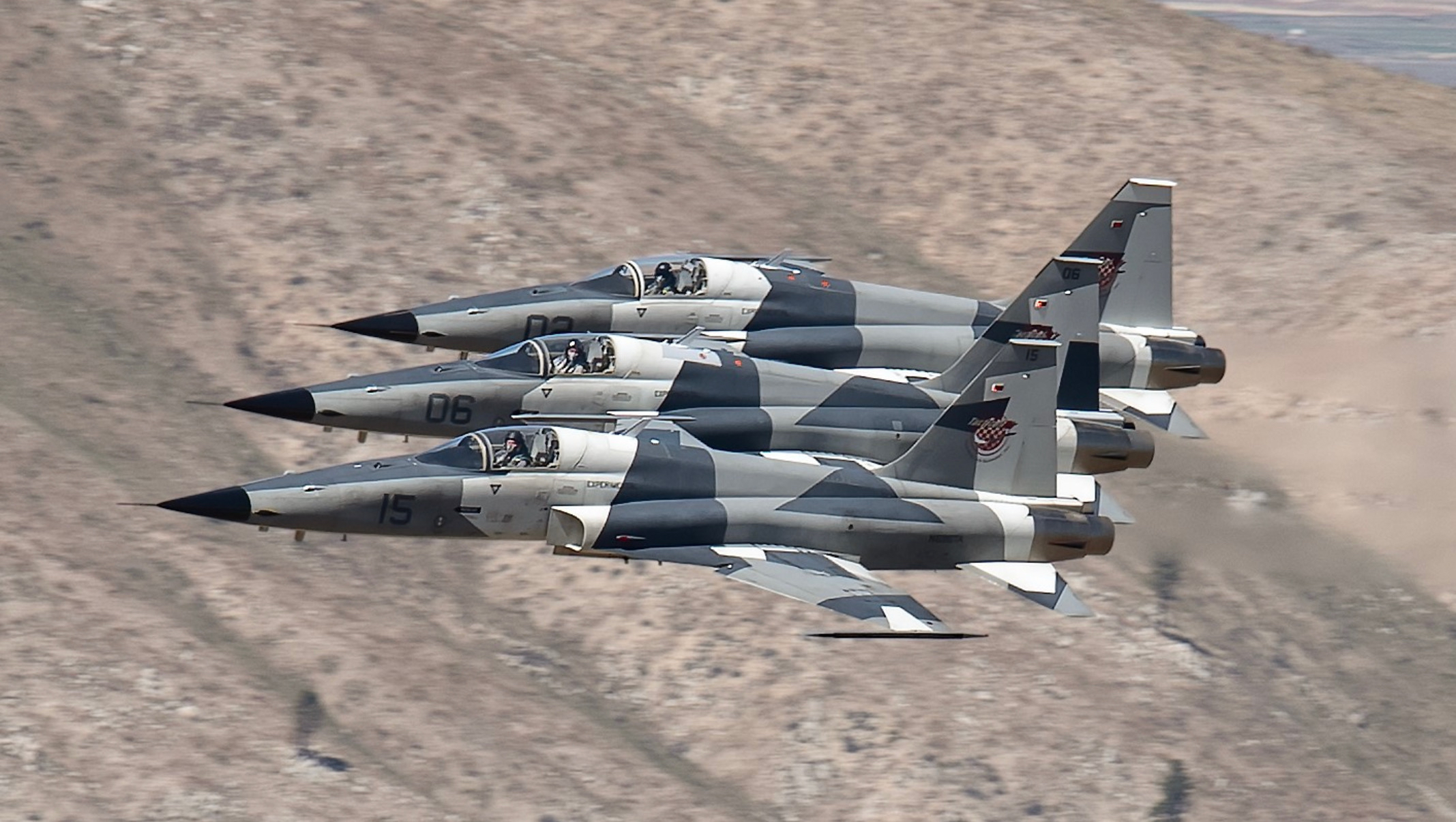
The most recent upgrade, however, is TacIRST, which TacAir said is a key addition to the F-5AT advanced threat replication system that supports the company’s Navy and Air Force adversary contracts. In general, an IRST system is meant to detect and track aerial objects via infrared emissions. They are also passive sensors, which means they emit no radio-frequency emissions so the target won’t be alerted to the fact that they’ve been detected and are being tracked.
“Some of the most advanced adversary aircraft that our U.S. fighter pilots might face in combat have a passive jam-shoot capability with IRST technology,” said Jim DiMatteo, director of communications at Tactical Air Support, in a statement to The War Zone. “In the U.S., especially at our U.S. Navy TOPGUN Fighter Weapons School and the U.S. Air Force Weapons School, we want to train against the best and most capable U.S. adversaries so our U.S. fighter pilots are the best prepared to be victorious in combat. By incorporating the TacIRST in the Tactical Air Support F-5s, especially when combining it with our internal DRFM jammers, our U.S. Fighter Pilots are getting the best training possible.”
Many foreign air forces, like Russia’s and China’s, are known users of IRSTs or systems that have IRST-like functionality, and they have been a staple on their fighter aircraft for decades. Therefore, replicating this part of the threat picture is increasingly important for training U.S. and allied aircrews.
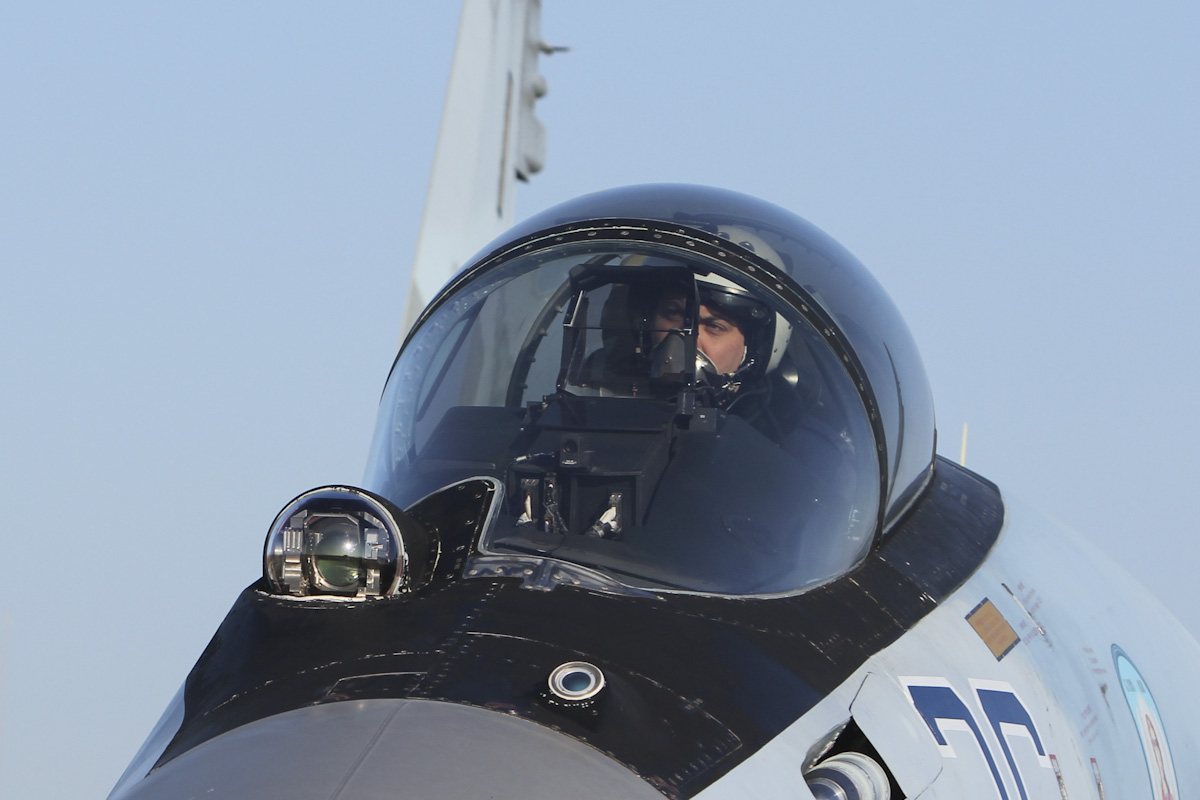
In recent years, advances in both IRST, electronic warfare, and stealth technology, have made IRSTs not just attractive additions to any fighter, but potentially essential sensor systems. IRSTs are immune to electronic warfare aimed at disrupting radar and other radio frequency emissions, which is important in an increasingly electronic-warfare-heavy air combat arena. IRST systems are very beneficial when it comes to detecting and tracking stealthy targets, like aircraft and cruise missiles that have major signature reduction features.
This is good for U.S. jets equipped with IRSTs that have to face the proliferation of stealth technology, but also bad for allied stealthy aircraft, especially high-performance ones with limited infrared signature reduction. As such, it is becoming absolutely critical that stealthy aircraft train against the threat posed to them by enemy IRSTs. The same is true for non-stealthy aircraft, as well, but they at least are not primarily relying on evading detection to survive. So, you can see why aggressors really need to be sporting these capabilities, and doing so has been in the works for at least a decade.
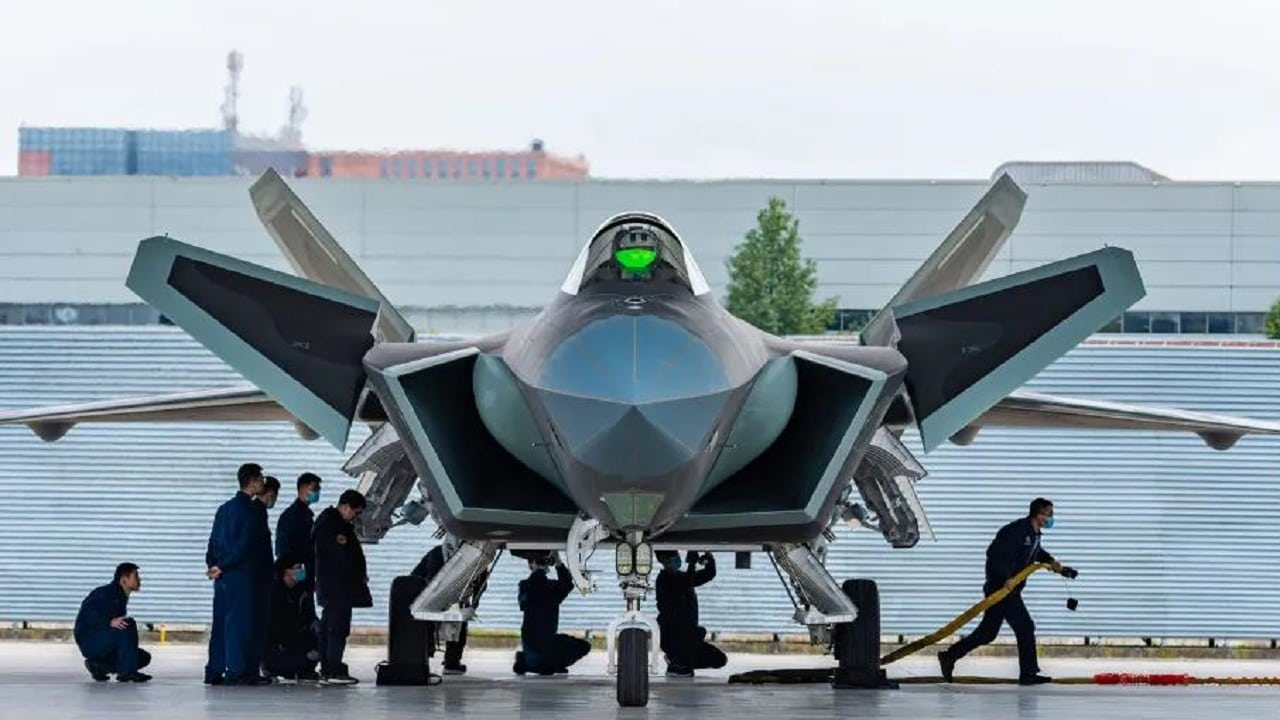
An IRST’s targeting data can be fused with an aircraft’s sensor suite to provide far more robust engagement-quality target tracks, including validating that an aircraft is actually even there and potentially even what type of aircraft it is. Multiple jets carrying IRSTs and operating on the same datalink network can instantly triangulate a target’s bearing and range without the help of other sensors. One aircraft can do this as well, but it is a far more cumbersome and time-consuming process.
Lockheed Martin’s TacIRST specifically is described by TacAir as being a multifunction sensor system with an open architecture designed to work in radar-denied environments. However, what could be the most notable characteristic of TacIRST is its uniquely small form factor. It was assumed private aggressors would field IRST capability in some sort of podded configuration — not an ideal setup for maximizing aircraft performance — but that is not the case with the F-5ATs.
“Unlike the podded solutions most often used to employ jamming and IRST in the air-to-air mission set, our TacIRST and advanced DRFM [digital radio frequency memory] jammer are fully integrated into the Advanced Tigers’ fuselage, open mission systems architecture, and modern cockpit displays,” said TacAir CEO R.C. Thompson in the press release. “In taking this innovative approach, we avoid significant aircraft performance penalties inherent in podded solutions and retain the F-5AT’s impressive performance envelope across the board.”
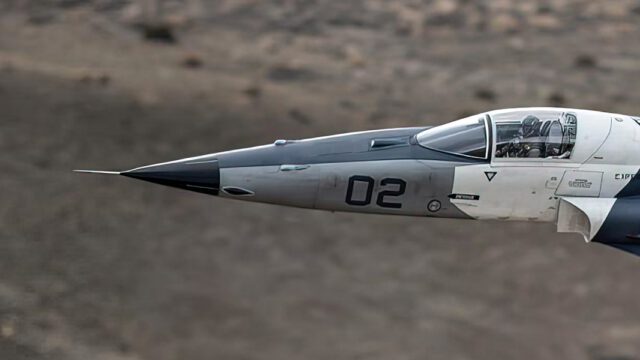
Unlike traditional IRSTs, which use bulbous or round window enclosures to mount the IRST’s gimballed sensor optics, TacIRST features a smaller staring sensor, similar to the distributed aperture or infrared threat warning system sensors found on the F-35 and F-22. Although for emulating a traditional IRST, just one forward-looking aperture is needed. It is also reminiscent of how enhanced vision camera systems are installed on private aircraft. How well this smaller staring sensor configuration performs compared to more traditional and bulkier IRST setups is unclear.
The War Zone also referred to a trademark application submitted by Lockheed Martin in 2021 that included a photo of a TacIRST podded concept for spherical coverage (see below). This would provide more of a general threat awareness capability than just what a traditional IRST can provide, but it would make sense that stripping down this same concept to just a forward-looking aperture would give what the aggressors need to replicate IRST functionality and would allow for easy internal installation.
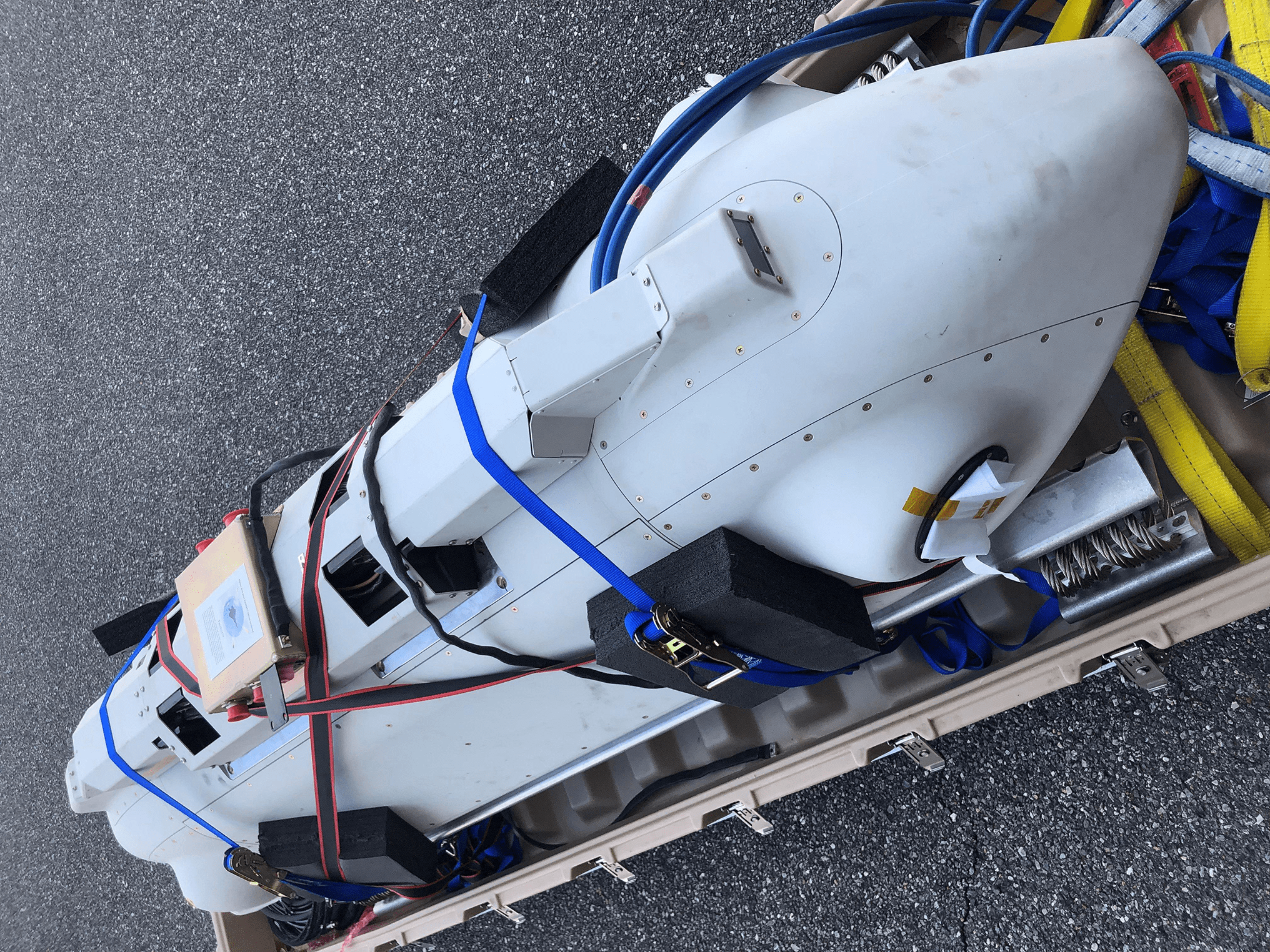
It’s possible but not confirmed that some of the technology behind TacIRST is in some ways related to upgrades to the F-22’s AN/AAR-56 Missile Launch Detector (MLD), a spherical infrared threat warning system that provides much more than just missile approach warnings, or at least potential upgrades of it in the future. There have been other major strides in developing far more adaptable multi-role distributed aperture-like systems capable of providing everything from visuals to pilots wearing helmet-mounted displays to threat warnings and other functions, in recent years. So, clearly, scaling similar concepts to work as an IRST emulator for aggressors makes sense.
Western air arms, and especially the U.S., are rapidly acquiring advanced IRST capabilities after decades of taking a hiatus on the technology, at least for the most part. For example, the Navy is currently fielding an IRST in a modified drop tank on F/A-18E/F Super Hornets, while the Air Force is instead doing so with the same IRST-21 sensor but mounted in what is now known as Legion Pod that can be fitted under the fuselages of F-15 Eagles and intake hardpoint on F-16 Vipers. Both capabilities are entering service now. You can read a deep dive into the Navy’s application of IRST-21 in this past interview feature of ours.
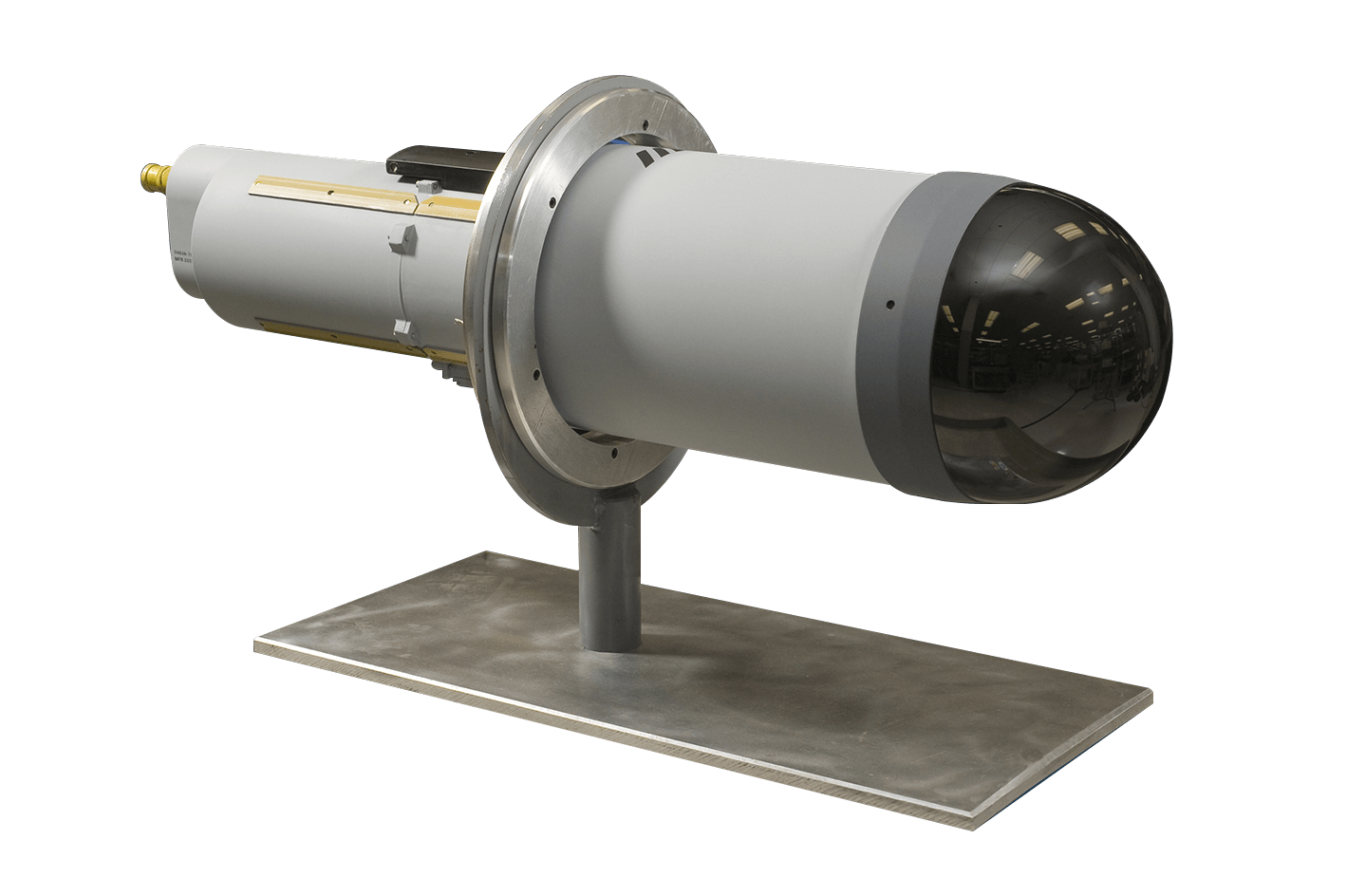

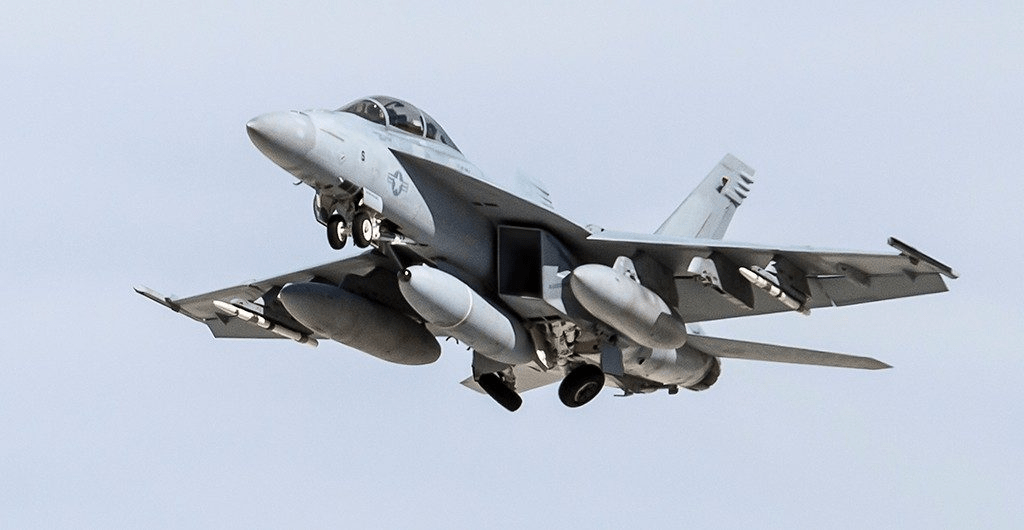
This won’t be the end of Lockheed Martin’s involvement in the program either as TacAir is planning to integrate and test additional but unspecified TacIRST capabilities on the F-5AT, as well. According to DiMatteo, testing for advanced capabilities will continue into 2023.
It seems TacAir and Lockheed Martin are already looking for other applications for TacIRST beyond the F-5AT, as well. In the press release, TacAir said that the system can provide a range of reconnaissance and threat-warning capabilities for both crewed and uncrewed aircraft. In fact, when contacted by The War Zone, Lockheed Martin revealed that the company’s new IRST device recently flew aboard the Avenger MQ-20A during a completely autonomous flight evaluation with General Atomics Aeronautical Systems (GA-ASI).
According to a GA-ASI press release, “the team flew ‘chase and avoid behavior’ where real-time updates were made to the flight path in order to avoid adversaries using live fused tracks. Live tracks were provided to the system using the Infrared Search and Track sensor network that was supplied by Lockheed Martin.” The MQ-20A has flown for some time with Lockheed Martin’s Legion Pod and IRST21, which you can read all about in this past War Zone report, and has proven its use in aerial combat tests using multiple Avengers to locate and track targets.
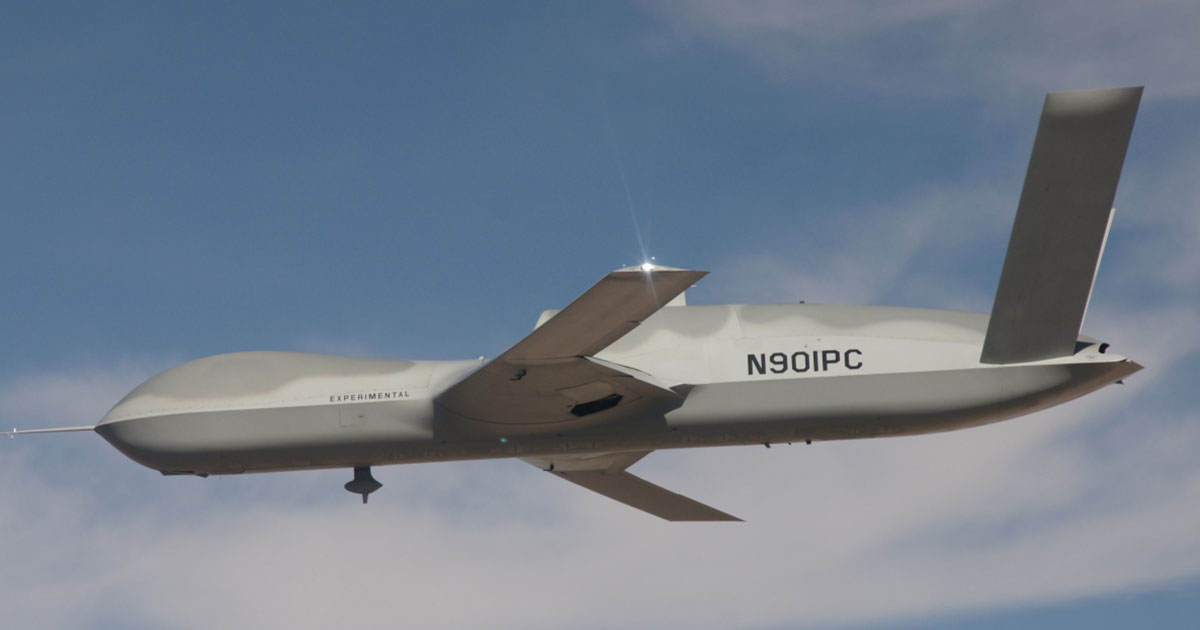
DiMatteo also explained that TacAir plans to “provision all of [their] jets to accommodate TacIRST in the Block 2 configuration of the F-5 Advanced Tiger” and that “the number of sensors [they] actually field will be driven by demand.” Either way, integrating TacIRST into various types of aircraft could certainly be a feasible development as the device’s aforementioned small form factor could make it easier to plug into various platforms.
Lockheed Martin’s TacIRST will be joining the other technologies that made up the F-5AT’s overall systems upgrade, many components of which were engineered by Duotech Services, a company specializing in airborne radars and repair services. The F-5AT’s upgrades include a purpose-built multi-mode pulse-doppler Nemesis radar, mission computer, a threat weapons engagement zone (WEZ) replication software suite, proprietary data-link, Scorpion helmet-mounted display, Garmin 3000 open architecture avionics suite with its wide-area display, and the purpose-built Argus Radar Warning Receiver (RWR) onboard electronic warfare system, among other upgrades.
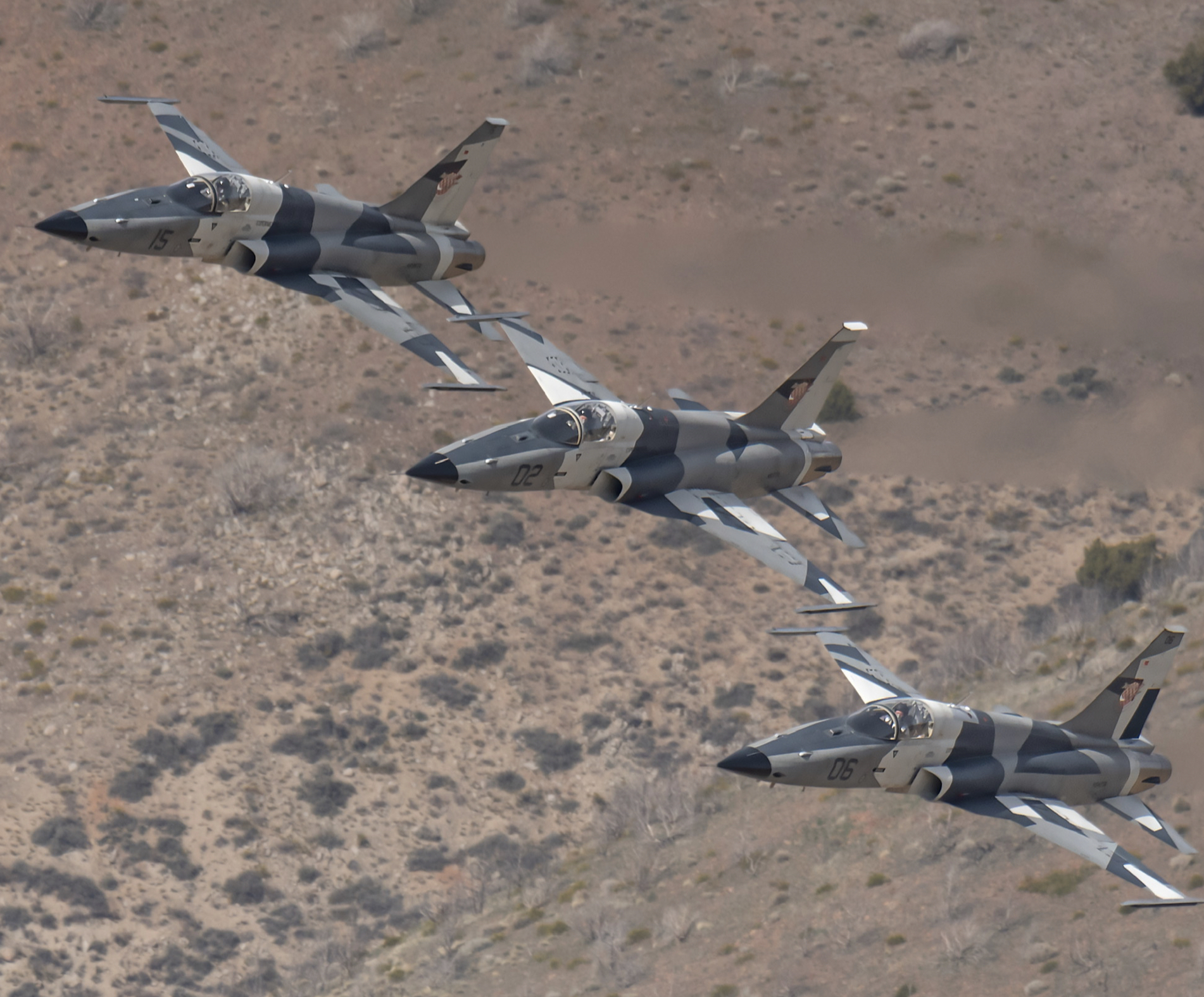
The Navy and Marine Corps have also been upgrading their in-house fleet of F-5N red air adversaries based on the F-5AT. The first of three F-5N Tiger II aggressor aircraft started undergoing these modifications last year at Naval Air Station Patuxent River in Maryland.
There, the jets’ airframes and twin J85-21 engines will be overhauled and their avionics replaced. The overall block upgrade is being handled by TacAir and takes place under the Avionics Reconfiguration and Tactical Enhancement/Modernization for Inventory Standardization (ARTEMIS) project. You can read all about the F-5AT configuration and the USMC’s own initiative based on it in this recent feature of ours.
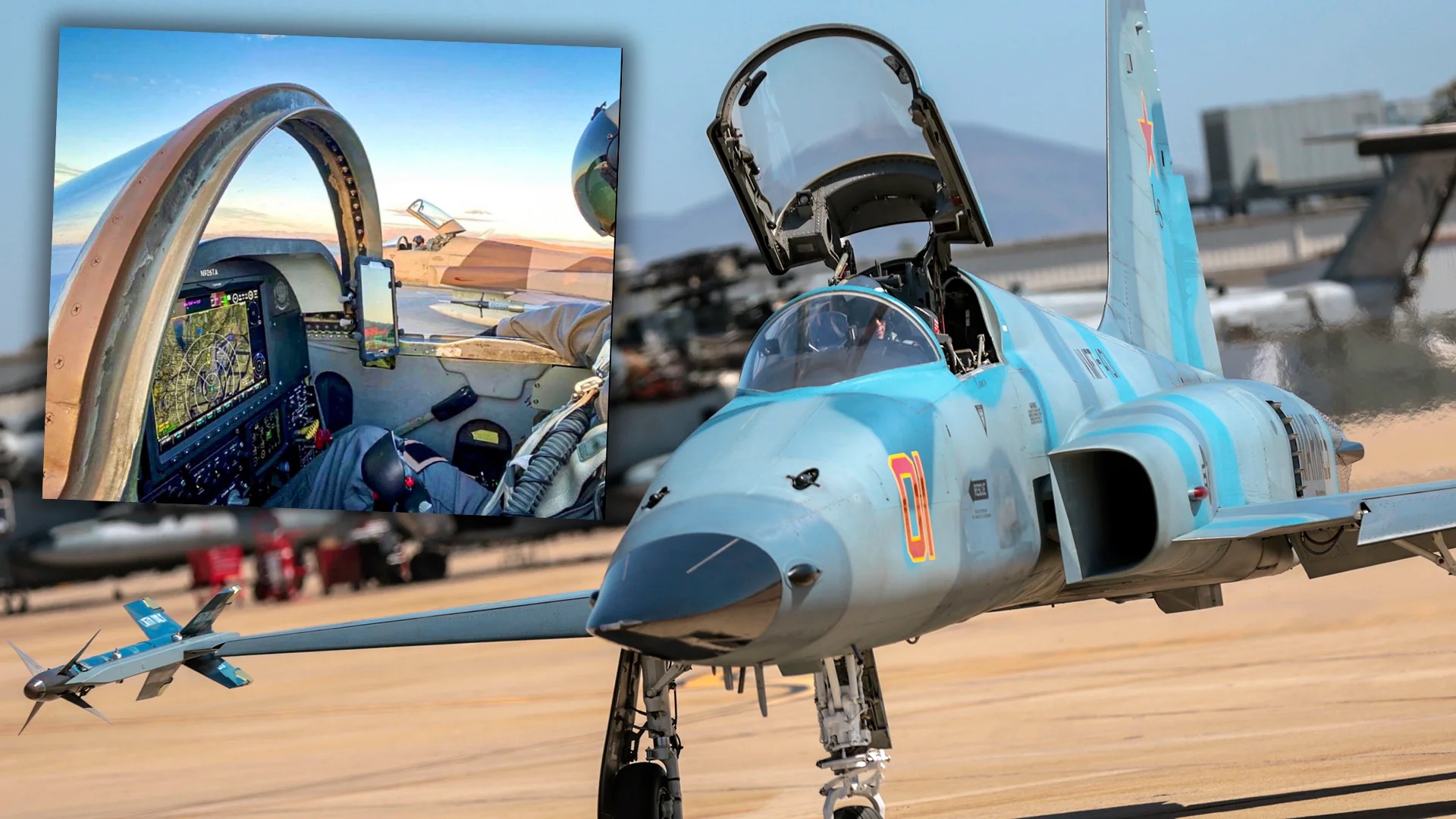
The addition of an internal IRST aboard F-5AT aggressors highlights how the role of the commercial adversary is maturing. Ensuring that fleet pilots can be effectively challenged by technologies similar to that of the ever-advancing capabilities of their adversaries will be critical to maintaining the U.S. military’s operational readiness. As a result, there is a growing demand for adversaries that can adequately replicate higher-end threats. While this can include raw performance, which the F-5 is not known for in this day and age, the sensors a jet carries, and more importantly, how they work together cooperatively, can be a far greater threat to contend with.
Contact the author: Emma@thewarzone.com and tyler@thedrive.com
